What's New
Displaying results 4611 - 4620 of 4914
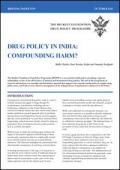
Resource | Publications,
Contemporary international drug policy seeks to control both the demand and supply of drugs through the criminalisation of production, trafficking and use. Furthermore, adherence to the United Nations drug control conventions ensures that most nation states adopt a similar prohibition-oriented approach when formulating national drug control legislation. Recent research suggests that this can be problematic in some Asian countries where longstanding cultural sanctions already existed for drug use; particularly those involving psychoactive plant products such as cannabis and opium.
With its focus on India, this briefing paper examines the impact of the punitive approach towards drugs in those societies and communities that have traditionally exerted socio-cultural controls over the use of mind-altering substances. The discussion highlights the unintentional but often harmful consequences of such drug control policies.
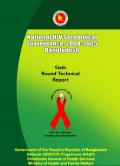
Resource | Publications,
Bangladesh has carried out serological surveillance annually since 1998 and from the very beginning has recorded the highest HIV rates in injection drug users in Central city A. This rate has been steadily rising over the years and now, during the 6th round, it is at 4.9%. The geographical coverage of injection drug users in surveillance has increased dramatically over the rounds, with only one city being covered in the 1st round to 17 cities in the 6th round.
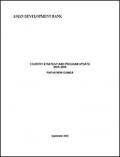
Resource | Publications,
With the overarching objective of reducing poverty, the Asian Development Bank (ADB) strategy for Papua New Guinea (PNG) focuses on strengthening governance, supporting private sector development, and improving social conditions. PNG displays characteristics of ADB’s Weakly Performing Developing Member Countries, underlying the difficult operating environment for ADB and other development partners. Weak public sector management and ineffective public services remain the main development problems. ADB's short-term priorities will be: consolidation (focusing on relationships with the Government and development partners), policy dialogue in key sectors, administration and implementation of existing projects and very selective identification of operations to deliver clear results. Based on lessons learned, e.g., in supporting private sector development, ADB will explore alternative channels for the delivery of assistance to achieve development objectives.
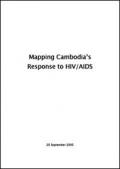
Resource | Publications,
Since the first HIV and AIDS cases in the country were identified in 1991 and 1994 respectively, steps to curb the spread of HIV/AIDS have been immediate. Government ministries, primarily the Ministry of Health (MoH) and several Non-Government Organisations (NGOs), initiated programs and projects to raise awareness and educate various population groups. Several structural changes took place to expand the scope of the response. Specifically, the National AIDS Program of the Ministry of Health was reconstituted and expanded into the National Centre for HIV/AIDS, Dermatology and STDs, and a National AIDS Authority was created with a mandate for ensuring that the response expanded beyond the health sector to a multi-sectoral approach. This approach was reflected in the first National Strategic Plan for a Comprehensive and Multisectoral Response to HIV/AIDS.
The current plan runs through the end of 2005 and has been reviewed as part of the process of developing the draft plan for the period 2006-2010. To guide programme planners and donors in implementing the new plan, an inventory of the HIV/AIDS response under the term of the previous plan was undertaken.
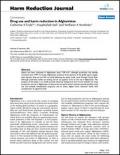
Resource | Publications,
Opium has been cultivated in Afghanistan since 1100 A.D., although production has steadily increased since 1979. Currently, Afghanistan produces three-quarters of the global opium supply, with injection drug use and HIV currently following the opium trade route through Central Asia. Although systematic studies are lacking, heroin use appears to be on the rise in Afghanistan. The purpose of this paper is to briefly provide historical background and current statistics for drug production and use in Afghanistan, to discuss the new government's policies towards problem drug use and available rehabilitation programs, and to assess Afghan harm reduction needs with consideration of regional trends.

Resource | Publications,
In the four months since the High-Level Meeting on "The Global Response to AIDS: Making the Money Work – The Three Ones in Action" on March 9th 2005, the estimates for the AIDS resource needs have been refined and updated. The revisions are based on newly available information and invaluable input from the recently formed Resource Needs Steering Committee and the Resource Needs Technical Working Group.
The coverage levels for services presented in the analysis should not be considered as agreed targets, but rather the outcomes that could be expected if these resources were spent as described.
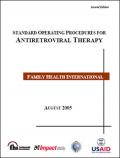
Resource | Presentations,
With significant reduction in the cost of antiretroviral (ARV) drugs, access to antiretroviral therapy (ART) has become increasingly real for people in low-resource settings. In many countries, governments have developed national guidelines on ART management to define care standards and establish protocols for such areas as eligibility criteria, drug regimens and monitoring HIV-infected clients on ART.
Standard operating procedures (SOPs) describe processes and provide instructions to maximize ART service delivery at health facilities in accordance with national guidelines. They guide clinicians in providing ART to HIV-infected clients and in evaluating performance, thereby serving as a quality assurance tool for management.
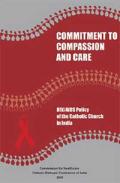
Resource | Publications,
One of the most alarming concerns about HIV/AIDS in India is the rate of the increase in the number of infected persons across the country. The first case was detected in India in 1986. By the end of 2003, less than twenty years later, the total number of persons living with HIV/AIDS was 5.1 million! The estimates from 1994 till 2000 show that the incidence has been doubled. Every year since 2000, five lakhs reported cases have been added, which may be just the tip of the iceberg. The financial burden, social constraints, and above all the personal and psychological pain and strain of those infected and affected experience are immense.
The entire Church has to continue to intensify its work and to join hands with like minded groups, to fight this disease, to curb its further spread, and to be with our sisters and brothers who are infected and affected. That is why we have developed this policy on HIV/AIDS for the Church in India. This Policy is our 'commitment to compassion and care'.

Resource | Publications,
Female injecting drug users differ from their male counterparts in terms of their background, their reasons for using drugs, and their psychosocial needs. However, most HIV/AIDS prevention and care programmes are not reaching this vulnerable group because services are designed for men. Attempts to reach and work with female injecting drug users are limited and, in fact, gender sensitive services addressing the specific needs of female injecting drug users hardly exist in most countries.

Resource | Publications,
This policy brief reviews the evidence to date on providing antiretroviral (ARV) therapy to HIV-positive injecting drug users. A number of related medical, psychological and social issues are also addressed including the need to manage drug interactions and the benefi t of harm reduction interventions in supporting optimum care for HIV-positive injecting drug users.





